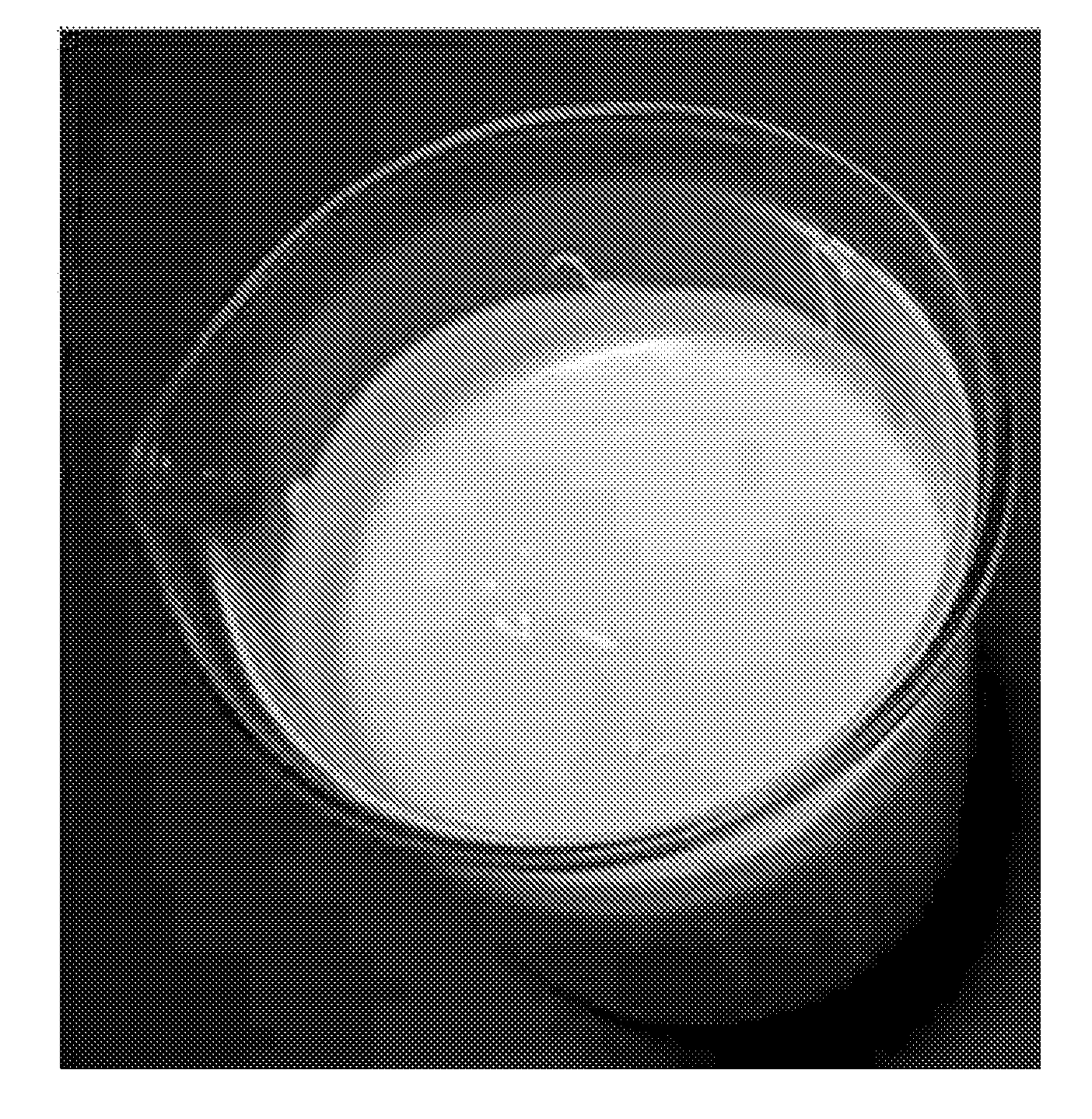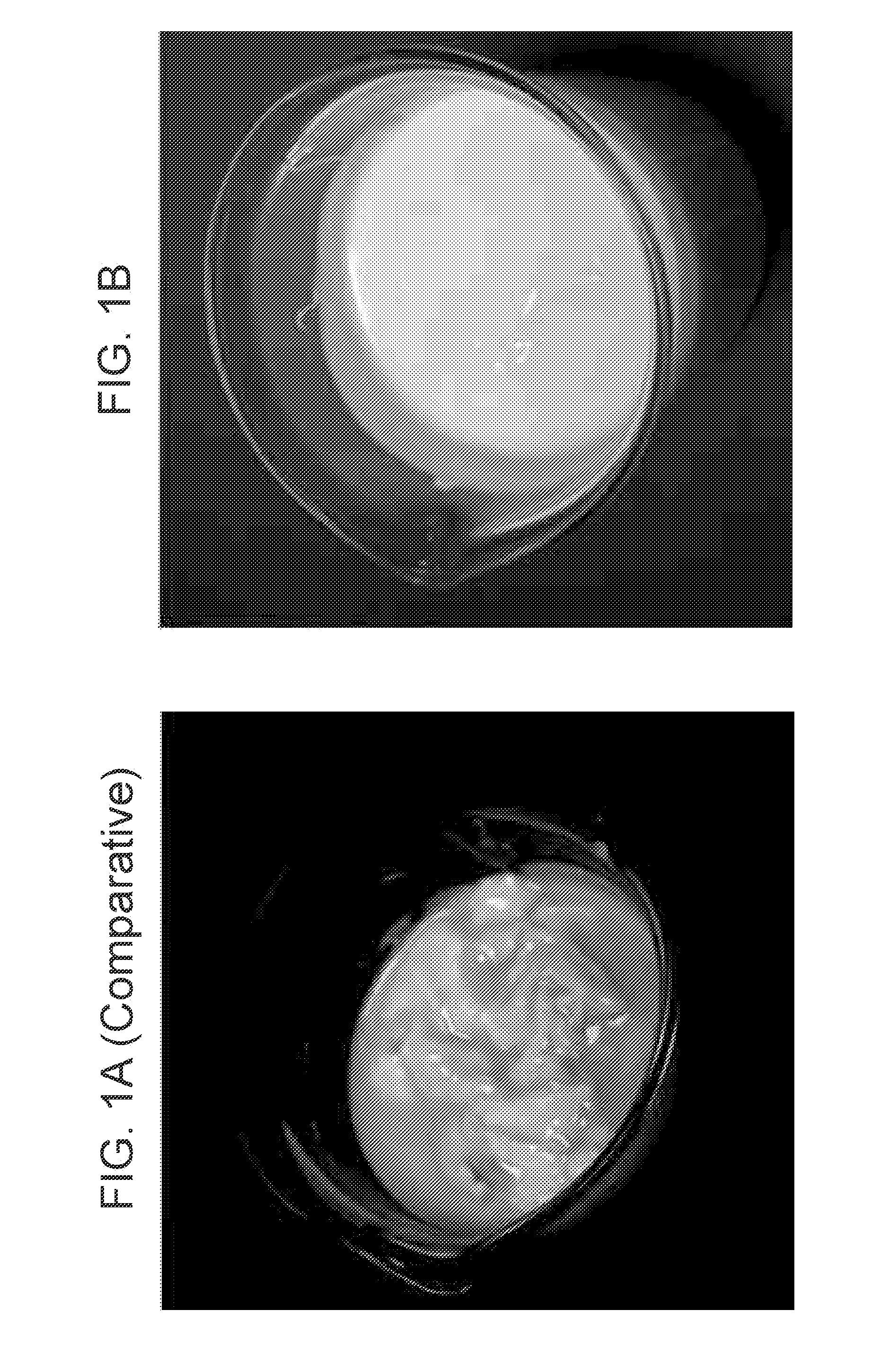Relaxer gel activator
a technology of relaxer gel and activator, which is applied in the field of hair straightening process, can solve the problems of natural curls to loosen out (or relax), brittleness, breakage or even alopecia, and lye relaxer tends to be rather harsh and caustic, and is extremely irritating to skin and eyes
- Summary
- Abstract
- Description
- Claims
- Application Information
AI Technical Summary
Benefits of technology
Problems solved by technology
Method used
Image
Examples
example 1
[0047]This example demonstrates methods for producing exemplary relaxer gel activator compositions.
[0048]The lists of ingredients and the weight percentages for each of the Activators 1A-1J are summarized in Tables 1A-1C.
[0049]The same general procedure is used to prepare Activators 1A-1H. Add the deionized water to a beaker. Slowly sprinkle the carbomer into the water and mix until well hydrated. Add the guanidine carbonate and mix until a smooth and homogeneous gel is formed. Individually add the glycerin, the red #33 (CI 17200), and, if present, the aloe vera gel, Meadowquat® HG-70 (PEG-2 dimeadowfoamamidoethylmonium methosulfate (70% active), from Fanning Corp., Chicago, Ill.), African hydration complex (a light yellow liquid oil containing carthamus tinctorius (safflower) seed oil (50%), crambe abyssinica seed oil (30%), butyrospermum parkii (shea butter) (5%), olea europaea (olive) oil unsaponifiables (10%), and lecithin (5%)), DC (Dow Corning) silicone, safflower seed oil, an...
example 3
[0056]This example illustrates methods for producing exemplary hydroxide compositions, which can be combined with the gel activator of the invention, as well as compositions that can be used before the relaxing treatment (as a pre-treatment) and after the relaxing treatment (as a post-treatment).
[0057]The lists of ingredients and the weight percentages thereof for Pre-Treatment Conditioners 3A and 3B are given in Table 3A, for Relaxer Bases 3A-3D in Table 3B, for Neutralizing Shampoos 3A and 3B in Table 3C, for a Post Neutralizing Conditioner in Table 3D, for a Masque Conditioner in Table 3E, and for a Leave-in Conditioner in Table 3F.
[0058]The Pre-Treatment Conditioner 3A is prepared as follows. Add a portion of the water (71.9% of the final wt. %) into a beaker. Add the disodium EDTA to the beaker, and mix the solution until the EDTA dissolves. Add the hydroxyethylcellulose, and mix the solution until the hydroxyethylcellulose is completely hydrated. Heat the solution to 75-80° C....
example 4
[0076]This example demonstrates the reduction in hair breakage achieved by using an exemplary relaxer gel activator of the invention relative to comparative activators.
[0077]African American Kinky Virgin Hair tresses (purchased from Demeo Brothers, New York, N.Y.) were prepared. Each assembly was dark brown to black in color, pre-stitched with a paraffin tab at the root, five inches wide, and 3-5 inches long before relaxing (which corresponded to 6-8 inches long after relaxing). One inch wide swatches were prepared by cutting the tresses, and two swatches were attached together using a glue gun and duct tape wrapped around once. Each swatch weighed approximately 7-9 grams.
[0078]Sixteen swatches were used per comparison with eight swatches used as test swatches and eight swatches used as control swatches, depending upon the activator (see Table 4). For the Comparisons 1-4, Activators 1A and 1B and Activators 2A and 2B were each individually mixed with the Relaxer Base 3A until the mi...
PUM
| Property | Measurement | Unit |
|---|---|---|
| Fraction | aaaaa | aaaaa |
| Fraction | aaaaa | aaaaa |
| Fraction | aaaaa | aaaaa |
Abstract
Description
Claims
Application Information
 Login to View More
Login to View More - R&D
- Intellectual Property
- Life Sciences
- Materials
- Tech Scout
- Unparalleled Data Quality
- Higher Quality Content
- 60% Fewer Hallucinations
Browse by: Latest US Patents, China's latest patents, Technical Efficacy Thesaurus, Application Domain, Technology Topic, Popular Technical Reports.
© 2025 PatSnap. All rights reserved.Legal|Privacy policy|Modern Slavery Act Transparency Statement|Sitemap|About US| Contact US: help@patsnap.com



